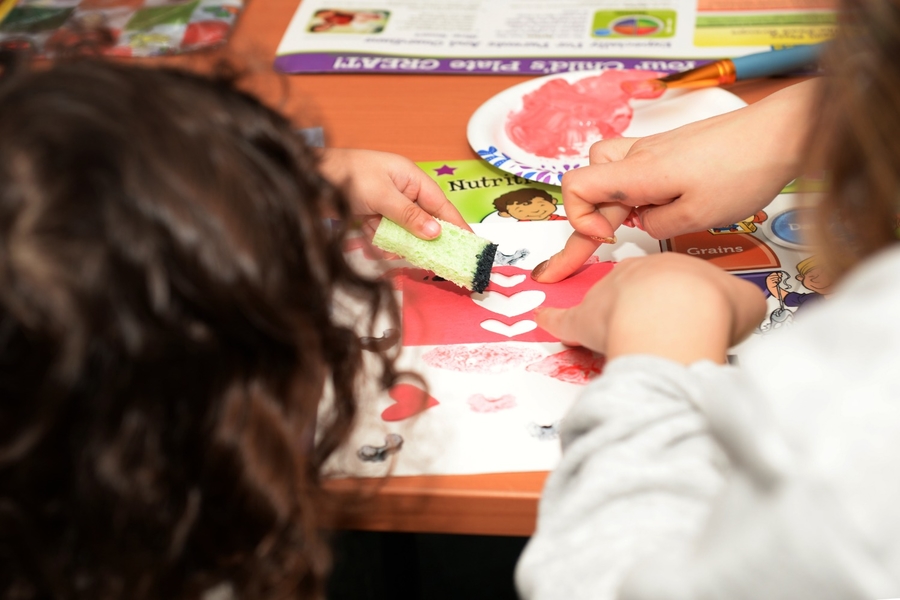
Stimulating Senses Through Sensory Bins
8 Oct 2018 | 5 min Read
Niharika Pandey (Shrimatisays)
Author | 7 Articles
A child’s sensory education begins at birth when she is first held by his mother. Her exposure to sensory experiences continues as she take in the comforting aroma of her mother’s skin; the sight and sound of everything around her ; clothing against her tender skin; the taste of first food. Montessori believed that we can build on this by encouraging babies and young children to focus on the physical world, exploring with each of their senses. Exercising children’s senses, by creating opportunities that draw their attention to aspects of everyday life or through specific sensorial activities, can greatly improve their awareness. In the years from birth to six, exercises to develop sensory awareness are especially valuable because this is when the nervous system is developing.
During the first year the best ways to develop sensory awareness is through “touch and feel” books or “treasure baskets”. For later years “sensory bins” are the best opportunities to create sensory experiences.
A very simple way to put together a sensory bin is add any grain (rice, pulses or legumes) to a large tray, few objects of different texture and size and let your child explore the objects through all his senses. These bins can also be used to exercise fine motor skills. Add small cups and ask baby to transfer the grains from one container to other. Use a spoon or tongs to transfer the grains. You can add mix of grains and ask baby to segregate the grains. For practical life skills prepare water bins by adding water and baby shampoo to a box. Put small toys, give small brush or sponge and ask baby to wash his toys. . Gardening is again a perfect example of sensory play .There is endless learning to sensory bins.
I started using sensory bins for my son when he turned 10months old. Previously we did lots of treasure basket activities. And now at the age of 2 years we have progressed from the unstructured bins to structured bins. We have been learning about farm, ocean, trees, washing utensils etc. Themed sensory bin helps in learning about particular subject in more detailed way. It engages child’s all senses in an activity stimulate his senses in ways that requires him to notice and discriminate between the properties of different objects.
The most common concern all parents have is the mess created by these activities. Well, I will be truthful here that this is messy and even I was worried about the mess when I started the sensory bins. After 2- 3 sensory bin accidents I took it as an opportunity (mess) and turned it as learning in disguise. Post every activity I asked my son to put everything in their respective places, mop if there is any spillage and sweep the floor. it gave him great pleasure to be able to do what adults can do. It has become our habit to clean up the area as part of the activity (practical life skill).
If you will search the internet for sensory bin pictures, you might e overwhelmed by seeing those perfectly set up bins, but to be fair most of the things used (perfectly sized animals, plastic tongs, scoopers, droppers etc) are not available in India or if they are then they are quite expensive. Don’t be disheartened rather make the best of the resources you have.

Here is the list of basic things which are required to put up a sensory bin:
- A large tray/box with a decent depth.
- For base- Rice, a very versatile product for sensory bins. You can use plain white rice for instructed activities or use brown rice to resemble muddy grounds, green rice for grass, and blue rice for water bed. Other than rice use pulses, sand, salt, water beads, flour, pasta shells, small stones
- Baby safe food colors- to add desired colour for your themed sensory bins.
- Tools For fine motor skills- Small wooden spoons or you can use baby crockery. Plastic tweezers (available in every household) and Medicine dropper, icecube tray, small jars/containers, small tumbler.
- Add ons- Prefer nature materials such as dry sticks, Rocks, leaves, flowers, sea shells etc. Adding nature material will add nice texture and aroma to your sensory bins and also it will help connect baby with nature. Apart from nature material you can also use pompoms, buttons, paper or fabric scraps, alphabets, numbers, wool, cotton balls.



While putting together a sensory keep few things in mind:
- It should be easy for baby to interpret.
- Should be visually stimulating as it holds baby’s attention for longer. Add lots of vibrant color.
- Avoid using very small object as baby has the tendency to put everything in mouth because during first year baby explores everything through their mouth.
- No sharp objects to be used.
- Never leave your baby unattended.
During the first 5 years baby’s mind is like sponge it absorbs every piece of information and knowledge provided to him. These first few years lays the foundation of your child, spend them wisely!
Disclaimer: All photographs in this article are original and belong to the author. Reproducing them in any form without the permission of the author will not be allowed.
A


Related Topics for you
Suggestions offered by doctors on BabyChakra are of advisory nature i.e., for educational and informational purposes only. Content posted on, created for, or compiled by BabyChakra is not intended or designed to replace your doctor's independent judgment about any symptom, condition, or the appropriateness or risks of a procedure or treatment for a given person.
